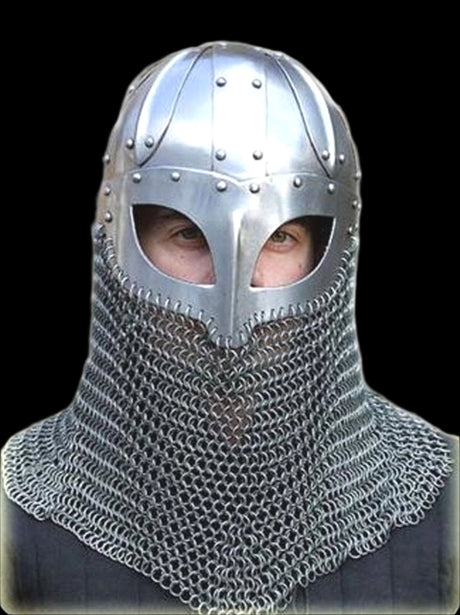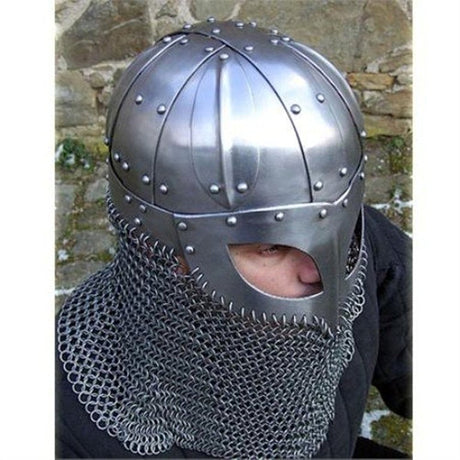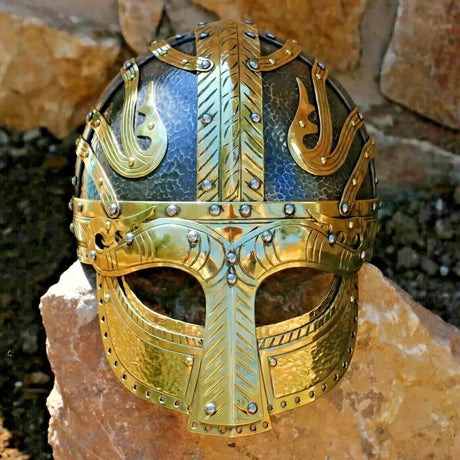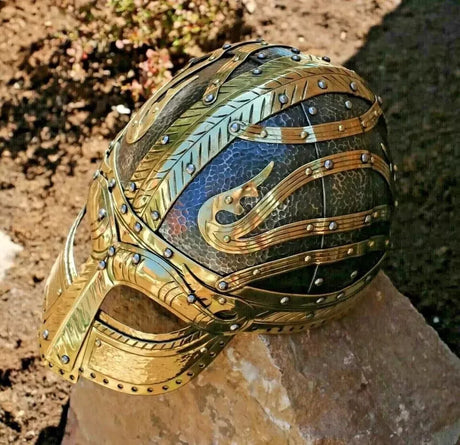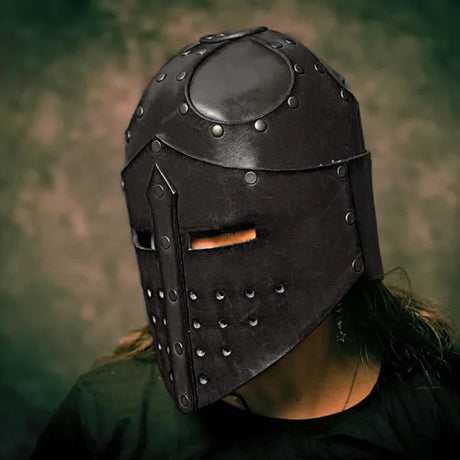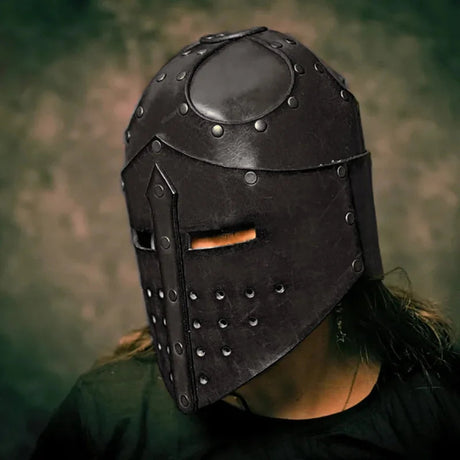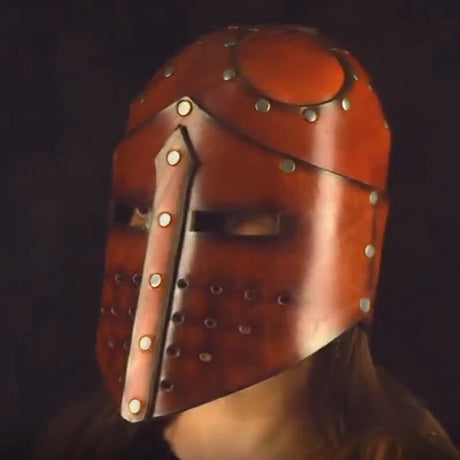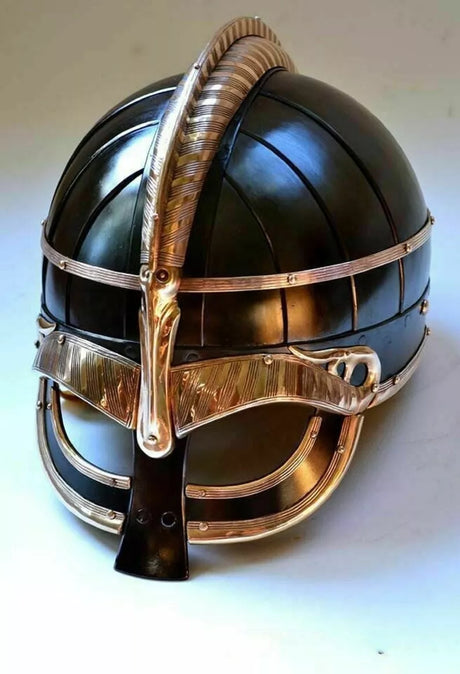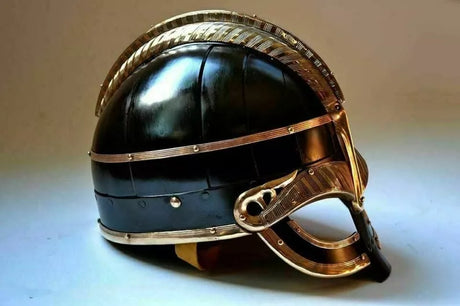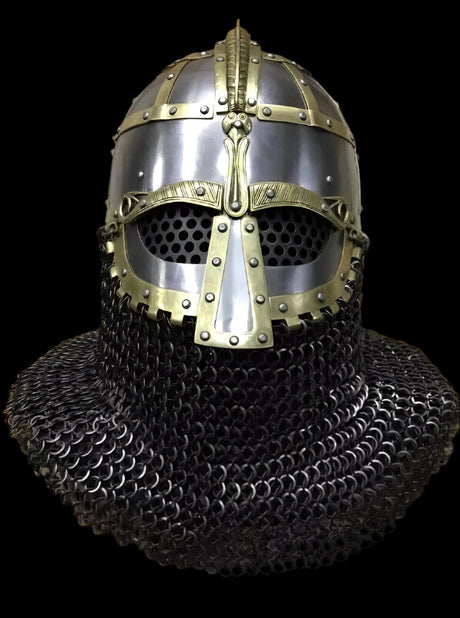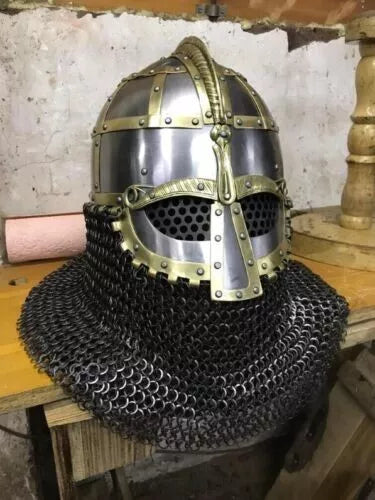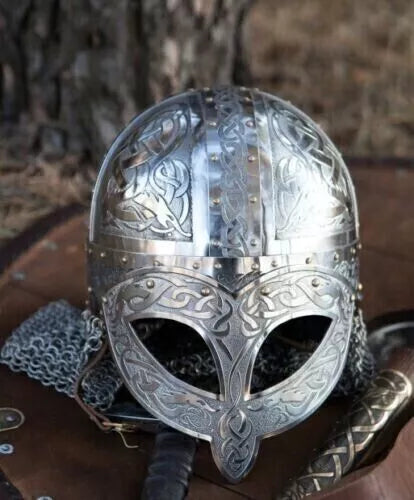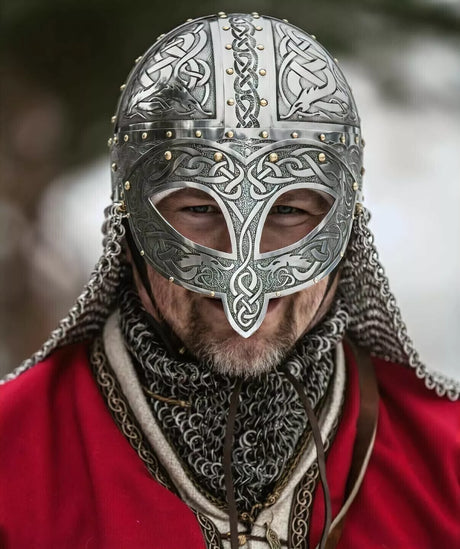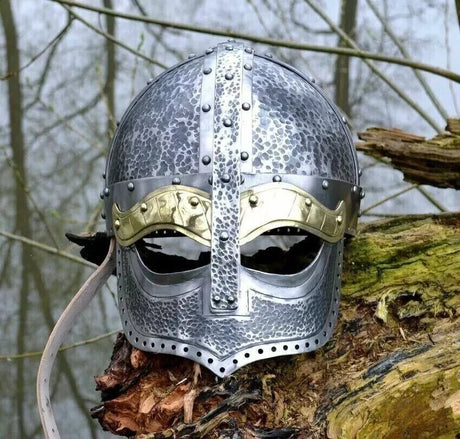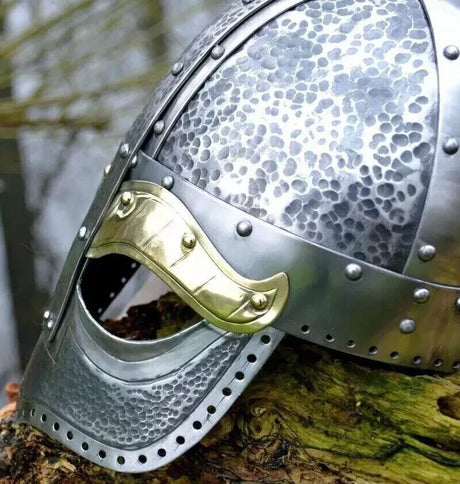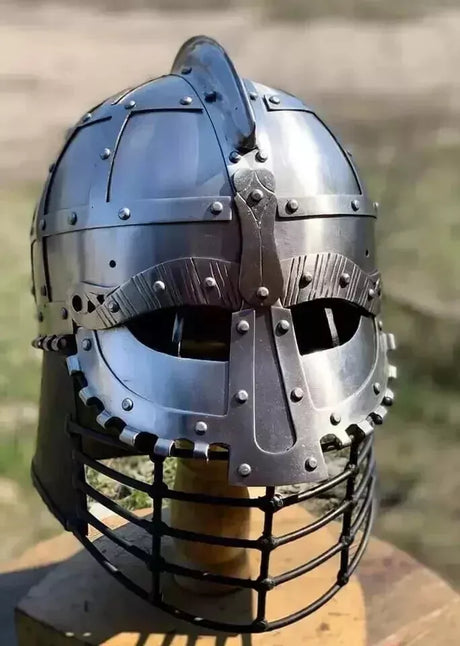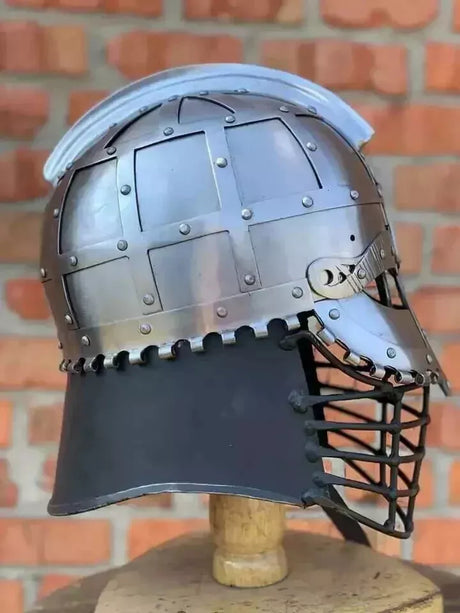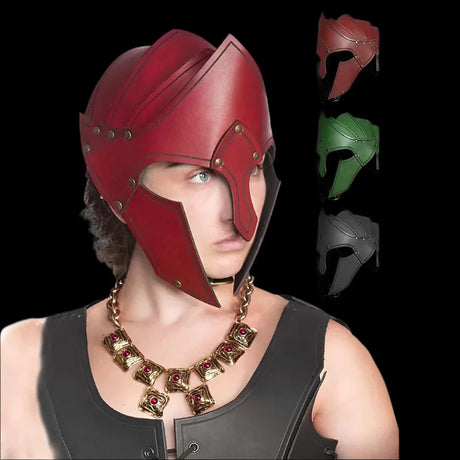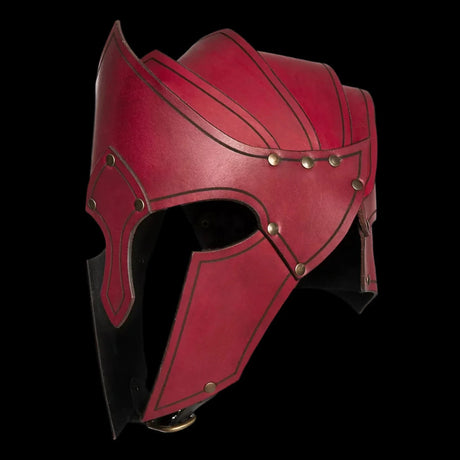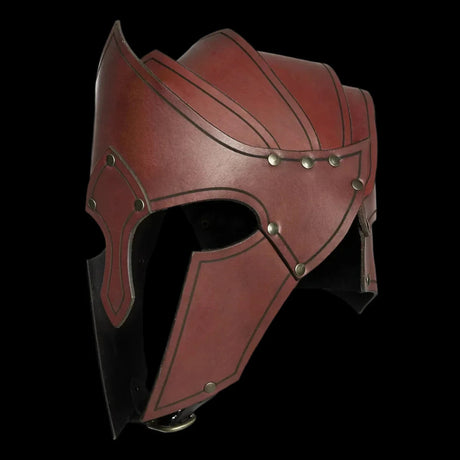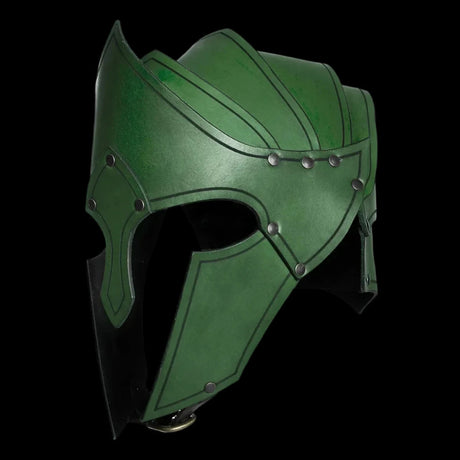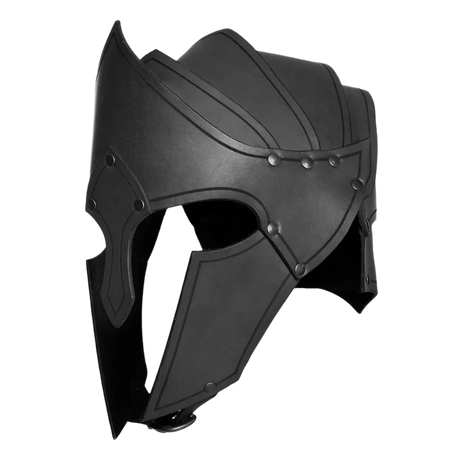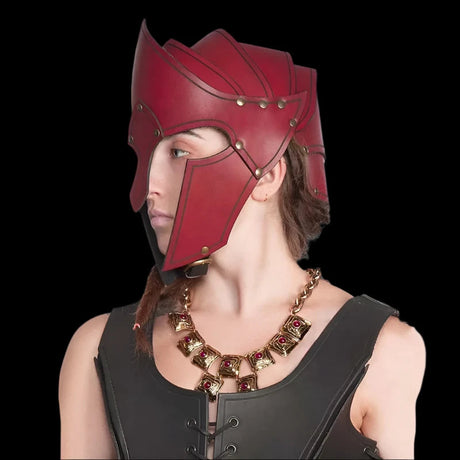Mention "Viking helmet," and what image instantly pops into your head? Chances are, it's a helmet with two large, imposing horns. This image is so ingrained in popular culture, from opera to cartoons to sports mascots, that it's become the defining feature of the Viking warrior. But here's a shocking truth: there's no reliable evidence that Vikings regularly wore horned helmets in battle. This blog will delve into the reality of the Viking helmet, separating historical fact from popular myth. We'll explore the actual headgear Vikings used, its construction, its purpose, and its surprisingly understated elegance. We'll bust the horned helmet myth and uncover the true face of Viking head protection. The interest of Viking and their tools have never been so high in the United State.
The Horned Helmet: A Myth is Born
The persistent image of the horned Viking helmet is a classic example of how historical misconceptions can take root and flourish. So, where did this idea come from?
-
19th-Century Romanticism: The horned helmet image largely originated in the 19th century, during a period of romantic nationalism and renewed interest in Norse mythology. Artists and costume designers, seeking to create a visually striking and "barbaric" image of Vikings, drew inspiration from earlier (and often inaccurate) depictions of Germanic and Celtic peoples.
-
Wagner's Operas: The most significant culprit is probably Richard Wagner's opera cycle, Der Ring des Nibelungen (The Ring of the Nibelung), first performed in the 1870s. The costume designer for these operas, Carl Emil Doepler, equipped the Viking characters with horned helmets, creating a powerful visual that quickly caught on.
-
Earlier Misinterpretations: There are a few pre-Viking Age depictions of figures with horned headgear, such as on the Golden Horns of Gallehus (from Denmark, 5th century) and some Bronze Age rock carvings. However, these are not Viking artifacts and likely represent ceremonial or ritualistic headwear, not battle helmets.
-
Oseberg Tapestry: Show two figures that appear to be wearing horned helmets, it is speculated to represent berserkers.
The horned helmet, therefore, is a product of artistic license and historical misinterpretation, not archaeological evidence. It's a powerful and enduring symbol, but it's not an accurate representation of Viking warrior gear.
The Reality: What Did Real Viking Helmets Look Like?
So, if Vikings didn't wear horned helmets into battle, what did they wear? The archaeological record, while limited, provides some crucial clues:
-
The Gjermundbu Helmet: This is the only complete Viking helmet ever found in Scandinavia. Discovered in a grave in Norway in 1943, it dates to the 10th century. The Gjermundbu helmet is made of iron, with a rounded cap, a prominent nose guard, and a mail aventail (a curtain of chainmail) to protect the neck. It has a "spectacle" design around the eyes, offering some facial protection. Crucially, it has no horns.
-
Helmet Fragments: Other archaeological finds have yielded fragments of helmets, providing further evidence of Viking helmet design. These fragments suggest that conical or rounded caps, often made from multiple pieces of iron riveted together, were common.
-
Artistic Depictions: While not always perfectly accurate, depictions of warriors on Viking-era picture stones, carvings, and metalwork can offer some clues. These depictions generally show simple, unhorned helmets.
-
Leather Helmets: There are a few opinions that Vikings used to wear leather helmets.
The overall picture that emerges is one of practicality and functionality. Viking helmets were designed to protect the head from blows, and they did so without unnecessary (and potentially dangerous) embellishments like horns. A horn on a helmet would be a liability in combat, offering an easy target for an opponent to grab or strike.
Materials and Construction: Building a Viking Helmet
Creating a functional Viking helmet was a skilled craft, requiring expertise in metalworking.
-
Iron: The primary material for Viking helmets was iron. Iron ore was smelted to produce iron, which was then hammered and shaped into the various components of the helmet.
-
Steel: While less common than iron, steel (iron with a higher carbon content) might have been used for some parts of the helmet, particularly the edges, to provide greater strength and durability.
-
Leather: Leather was likely used for lining the helmet, providing padding and comfort. It might also have been used for chin straps.
-
Mail: Chainmail, as seen on the Gjermundbu helmet, was sometimes used to create an aventail, offering additional protection for the neck.
The construction process would have involved:
-
Shaping the Cap: The helmet's cap might be made from a single piece of iron hammered into shape, or from multiple pieces riveted together.
-
Adding the Nose Guard: A separate piece of iron would be shaped and riveted to the cap to form the nose guard.
-
Creating Eye Protection: The Gjermundbu helmet's "spectacle" design was likely created by shaping and riveting additional pieces of iron around the eye openings.
-
Attaching the Aventail (if present): Chainmail would be painstakingly constructed, link by link, and then attached to the lower edge of the helmet.
-
Lining and Straps: A leather lining would be added for comfort, and leather straps would be attached to secure the helmet to the wearer's head.
This process required considerable skill and time, making a well-made Viking helmet a valuable piece of equipment.
Beyond Protection: The Symbolism of the Viking Helmet (Even Without Horns!)
While the primary function of the Viking helmet was protection, it also held symbolic significance:
-
Status: A well-made helmet, particularly one with decorative elements, could indicate the wearer's wealth and status.
-
Warrior Identity: The helmet was a key part of a warrior's equipment, identifying him as a combatant and a member of a warrior culture.
-
Intimidation: While not adorned with horns, a metal helmet, especially one with a nose guard or eye protection, could still present an intimidating appearance to an opponent.
-
Possible Spiritual Significance: Some scholars speculate that certain design elements on helmets might have had symbolic or even magical significance, although this is difficult to prove definitively.
Even without the mythical horns, the Viking helmet was a powerful symbol, representing the warrior spirit, protection, and the practical realities of Viking life.
Viking Helmets in Popular Culture: The Enduring Myth
Despite the overwhelming evidence against horned helmets, the image persists in popular culture. This is largely due to the factors mentioned earlier: 19th-century Romanticism and Wagner's operas.
-
Movies and TV: From early Hollywood epics to modern series like "Vikings" (which, to its credit, mostly avoids horned helmets), the image has been perpetuated, albeit often with a knowing wink to the audience.
-
Video Games: Many video games featuring Vikings include horned helmets as a visual shorthand for "Viking warrior."
-
Sports Mascots: The Minnesota Vikings, for example, use a horned helmet as their logo, further solidifying the association in the public mind.
-
Comics: Comic books, particularly those drawing on Norse mythology, often feature horned helmets.
While these depictions can be entertaining, it's important to remember that they are not historically accurate. The real Viking helmet was a far more practical and, in its own way, equally impressive piece of equipment.
The Spangenhelm: A Possible Influence?
While Vikings didn't wear horned helmets, there was a type of helmet common in Europe during Late Antiquity and the Early Middle Ages that might have influenced some Viking helmet designs: the Spangenhelm.
Construction: The Spangenhelm was typically constructed from multiple pieces of metal (often iron) riveted together. It often had a conical or rounded shape and could include a nose guard, cheek pieces, and neck protection.
Widespread Use: Spangenhelms were used by various cultures across Europe, including Germanic tribes, Romans, and others.
Possible Connection: While not identical to the Gjermundbu helmet, the Spangenhelm's construction and overall shape share some similarities. It's possible that Viking helmet designs were influenced by earlier Spangenhelm traditions.
The Spangenhelm provides a valuable point of comparison, highlighting the broader context of European helmet development during this period.
Beyond the Helmet: Other Forms of Viking Head Protection
While metal helmets were undoubtedly used by some Vikings, it's also important to consider other forms of head protection that might have been more common, particularly among less wealthy individuals:
Leather Caps: Leather caps, possibly reinforced with padding or metal plates, could have provided some protection against blows.
Padded Caps: Thickly padded caps made of wool or linen could have offered some cushioning against impacts.
No Head Protection: It's also possible that some Vikings, particularly those who couldn't afford any other form of headgear, went into battle without any helmet at all.
The archaeological record is less likely to preserve organic materials like leather and textiles, so it's difficult to know how common these alternative forms of head protection were. However, it's reasonable to assume that they played a role, particularly among those who couldn't afford metal helmets.
Conclusion
The Viking helmet, stripped of its mythical horns, remains a fascinating and important artifact. It represents the ingenuity, skill, and practicality of the Viking people. While the horned helmet image may persist in popular culture, understanding the reality of Viking head protection – the Gjermundbu helmet, the Spangenhelm influence, the use of leather and padding – provides a far richer and more accurate picture of Viking life and warfare. The true Viking helmet was a symbol of protection, status, and warrior identity, a testament to the resourcefulness of a remarkable culture.
To find replica of Viking Helmet and other Norse artifacts, check out Tales of Valhalla.

